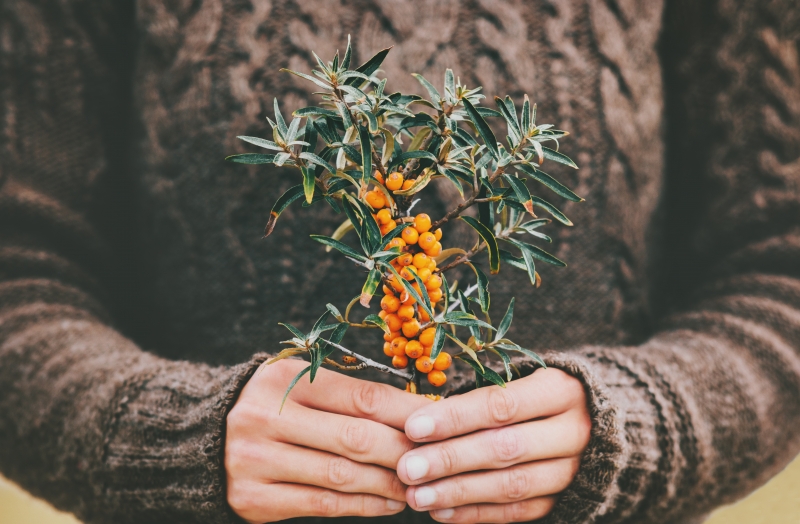On a clear winter day a walk along the cliff tops offers an impressive 360⁰ view over both land and sea.
Keep an eye out for kestrels on the wing and listen for cormorants as you follow the rolling coast path, meandering over close-cropped grass and scrubby thickets. During autumn these areas offer a prime location for foraging Sea Buckthorn.
Bristly bushes with inch long spines may appear intimidating at first, but the tightly clustered berries, amber in colour, offer up a bounty to those who are willing to commit a bit of time and effort. Take along a sturdy tub and a pair of gloves and your cliff top walk will provide an abundance of culinary potential.
Sea Buckthorn is plentiful on the east coast; their roots send out suckers that help stabilise coastal cliffs and dunes making them a valuable plant on Norfolk’s coastline.
Sea Buckthorn are dioecious, meaning the plants are either male or female. The males produce flowers and pollen, while females produce the fruits. The bright orange berries which have a citric tang, ripen in late summer and can remain on the plant throughout the winter.
Sold as a restorative juice in the Himalayas and used as a tonic by armies of Genghis Khan, the berries of sea buckthorn Hippophae tibetana are rich in vitamin C and can be eaten raw or used to make preserves, desserts or alcoholic tipples.
Stay a while, enjoy the huge landscapes, harvest your crop, then return to your kitchen armed with these restorative berries.
For further details about Head East visit www.visiteastofengland.com/head-east




